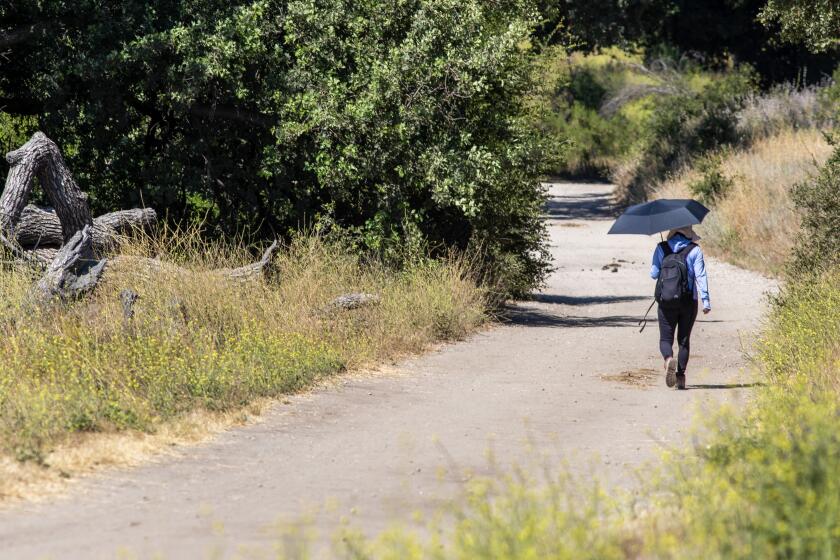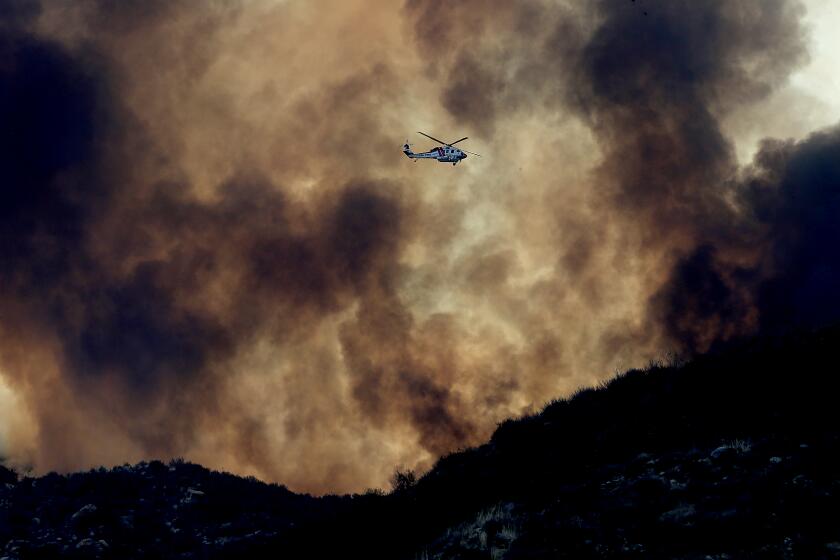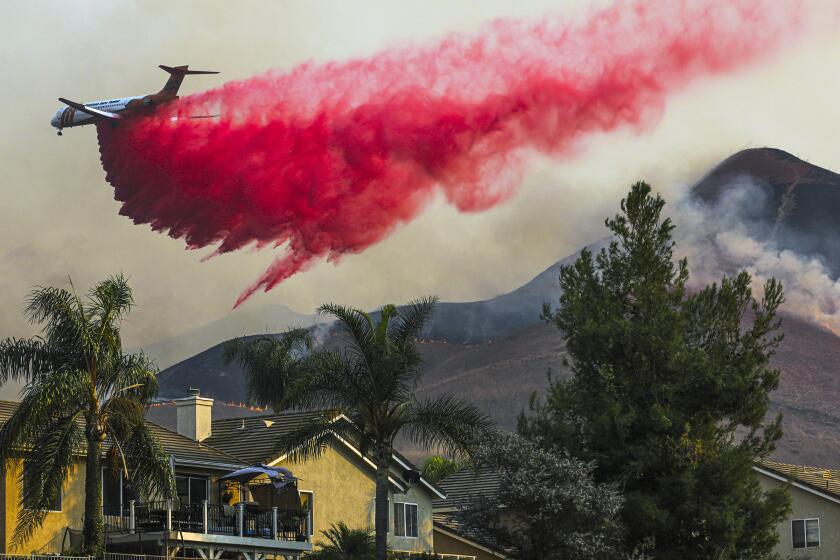Night-flying helicopters prepare to battle wildfire as heat wave bakes California
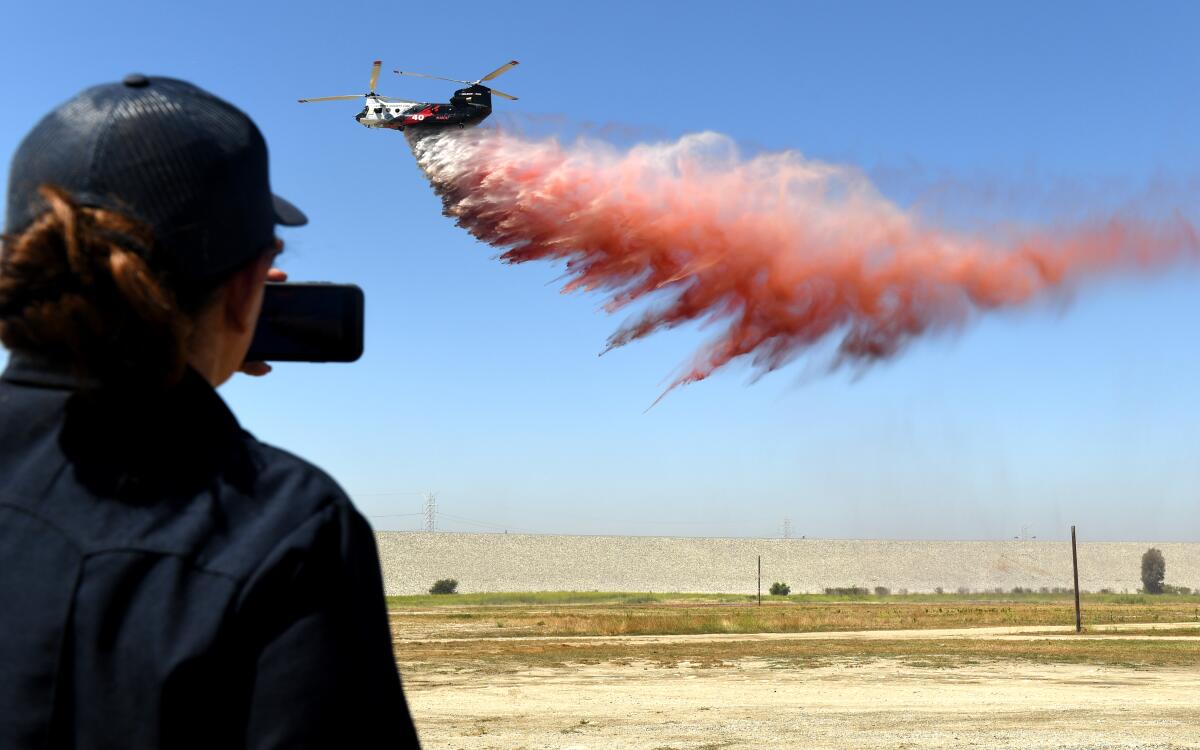
Clouds of dust swirled around the Santa Fe Dam in Irwindale as a massive helicopter hovered over a tank of wildfire retardant, dropped a long snorkel from its belly and sucked up 3,000 gallons of bright pink material in just about 90 seconds.
The chopper zipped back into the sky, where it met with two other Coulson CH-47 Chinook helitankers and got in formation. One by one, they dropped the neon retardant on the ground below â the latest demonstration of Californiaâs war-like preparations for wildfires this year.
âAs we get deeper into the fire season and this summer, weâre going to be approaching fall when the Santa Ana winds will return,â Los Angeles County Fire Department Chief Anthony Marrone said. âWe can expect the risk of wildfires to grow, especially given the increased vegetation and the habitat thatâs grown following a wet winter and spring. This vegetation will be dried out and become explosive fuel, which will result in rapid wildfire spread.â
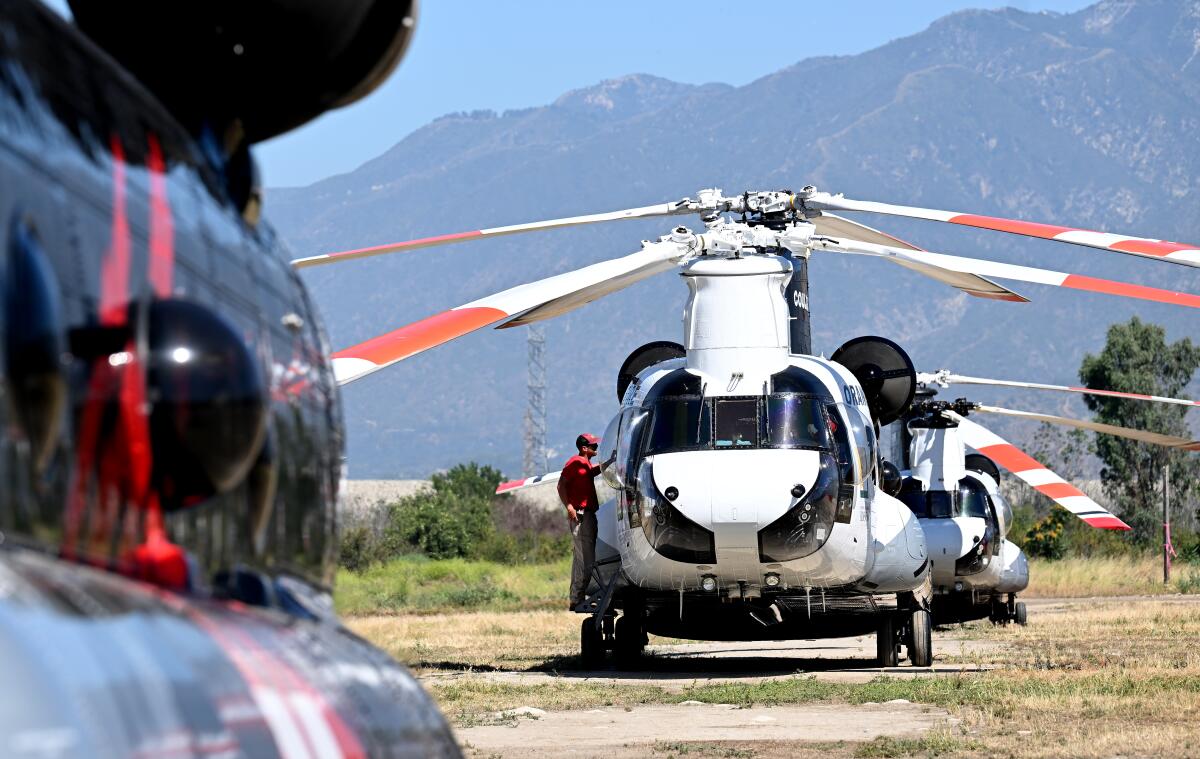
Marrone had gathered with officials from the Ventura County Fire Department and the Orange County Fire Authority on Monday to demonstrate the helitankers, part of a cooperative fleet of aircraft, pilots and support crew known as the Quick Reaction Force. The force, which has been funded by Southern California Edison since 2021, is designed to respond to wildfires 24 hours a day.
âWhat sets the QRF helitankers apart is the game-changing ability to drop water or gel or fire retardant both day and night,â Marrone said, adding that this is the first year the force will be available all year long. Previously, it was active only during peak fire season in the second half of the calendar year.
A heat wave is expected to hit Southern California this week, bringing âelevatedâ fire danger to the region and increasing the chance for heat-related illness.
For the record:
8:33 a.m. July 19, 2023An earlier version of this article incorrectly stated the Station fire happened in 2010. The blaze, the largest wildfire in L.A. County history, happened in 2009.
Until recently, many aerial fire crews could fly only during the day â an operational limitation that has been problematic in such blazes as the 2009 Station fire, which was responsible for the deaths of two firefighters and stands today as the largest wildfire in Los Angeles County history.
The ability to fly at night, aided by night vision goggles and other instruments, allows crews to continue dropping water or retardant to slow a blaze â and to gather data about a fireâs size and growth â all night long.
âWe talked about, what could we do that maybe would be a little different, that maybe would have a lot of impact in our communities here in Southern California?â said Orange County Fire Authority Chief Brian Fennessy. He noted that about two-thirds of Californiaâs population resides in Orange, Ventura and L.A. counties.
âEven though we had very robust initial attack response â lots of engines, bulldozers, hand crews, helicopters, air tankers â sometimes it wasnât enough. Wouldnât it be great if we had a surge capacity? Wouldnât it be great if we could drop retardant at night when the fixed-wing air tankers all have to fly back because itâs gotten dark?â
This year, the Quick Reaction Force has added an additional Chinook helitanker to its lineup, bringing the total to three. A Sikorsky S-76 intelligence and recon helicopter helps guide the tankers at night, while a mobile retardant base provides up to 18,000 gallons of mixed retardant per hour. During peak wildfire season, the mobile retardant base will be positioned close to fires in predetermined locations in each county.
The Fairview fire is one of the first in which Cal Fire has deployed helicopters at night.
In 2021, the force was deployed to help battle blazes in Northern California, where it dropped water and retardant at night for the first time, Fennessy said.
Last year, the force dropped more than 700,000 gallons of water on more than 25 wildfires, including the 5,200-acre Route fire in Castaic. The crew also dropped âtens of thousands of gallonsâ of retardant on that blaze throughout the night, helping to extinguish the fire.
âWe are changing the way aerial firefighting is being done,â Fennessy said.
The helitankers are operated by Coulson Aviation and managed and leased by the fire departments. Southern California Edison, which sponsors the program, has been linked to a number of wildfires started by its equipment, including the deadly 2017 Thomas fire in Ventura and Santa Barbara counties; the 2018 Woolsey fire near Malibu; and the 2020 Bobcat fire, which seared through Angeles National Forest and nearly scorched the Mt. Wilson Observatory.
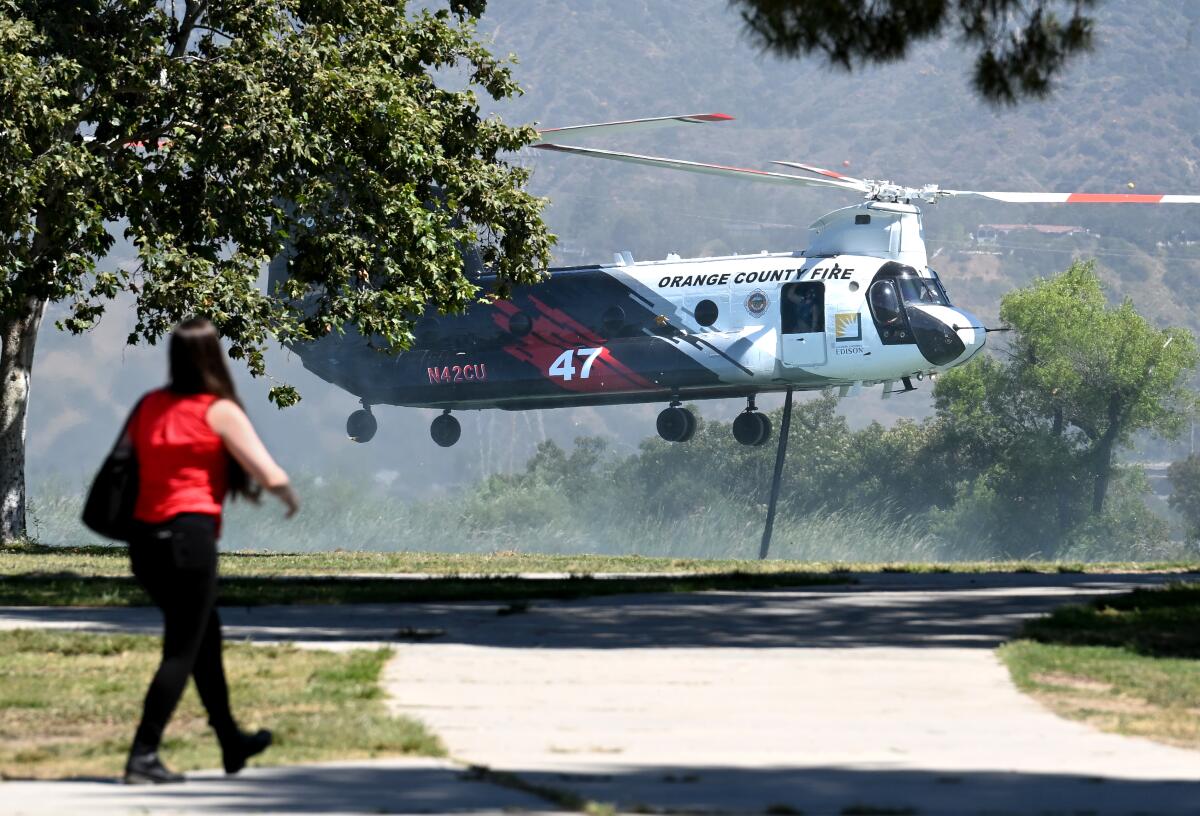
Last week, Edison was part of a $22-million settlement for its alleged role in the 2016 Rey fire, which sparked when a tree fell onto power lines in Santa Barbara County and went on to burn more than 32,000 acres.
None of the funding for the Quick Reaction Force comes from such settlements, Edison Chief Executive Steven Powell said. The fire departments pay for the operations, while the standby costs come from the utility and its ratepayers, as outlined in Edisonâs wildfire mitigation plan. The plan is intended to reduce wildfire risk from Edison equipment, as well as the number of public safety power shutoffs in high fire risk areas.
âThe Quick Reaction Force is such a critical tool to keep our community safe here in Southern California,â Powell said. He added that Edison nearly doubled its contribution to about $35 million to make the force available year-round.
While many fire experts say retardant is an invaluable resource for battling blazes, a growing number of environmentalists have raised concerns about the bright pink material.
Wayne Coulson, chief executive of Coulson Aviation, said the Chinooks are the industryâs most powerful CH-47 firefighting helicopters. Since the Quick Reaction Force began operation in 2021, it has responded to 138 fires, with none lasting more than 24 hours, he said. Last year, 60% of its firefighting operations were at night.
Marrone noted that fire season has been relatively calm in Southern California so far this year, but he anticipates a potential change with an incoming heat wave that is expected to elevate temperatures in the region into the triple digits.
âI think that is going to be the beginning of our brush fire season, so I would imagine that our brush fire season might run a little bit longer into October and November,â Marrone said.
The wet winter and spring not only created more dense vegetation that can feed fires but also grew more grasses next to roads, where many blazes start, he said.
âI donât ever want to say itâs going to be a terrible fire season because of rain, but we did look at data, and the years that followed heavy rains had bigger fires,â he said.
More to Read
Sign up for Essential California
The most important California stories and recommendations in your inbox every morning.
You may occasionally receive promotional content from the Los Angeles Times.
